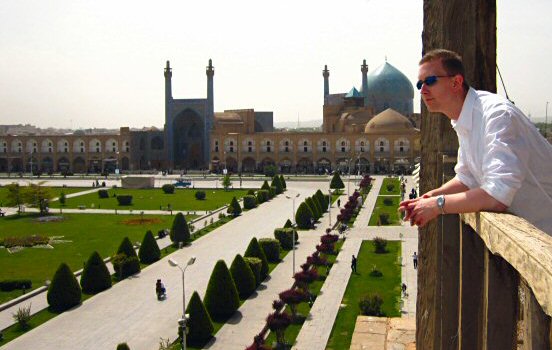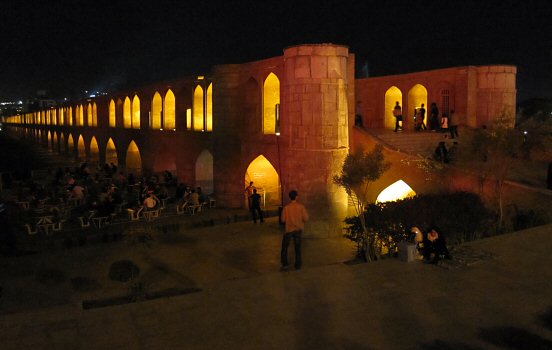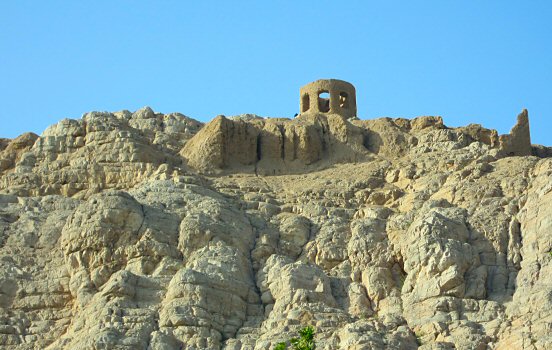They used to say “Esfahan nesf-e jahan” — Esfahan is half the world. A bold claim. Maybe even arrogant. But then again, after a few hours under that cobalt dome of sky and tile, you start to get it.
While sitting in the grass on the open field at Imam Square, it feels like a different world. This isn’t just a city. It’s a fever dream of geometry, calligraphy, and blood-stained history baked into turquoise and sandstone. Esfahan may be surrounded by barren desert, but it is a pearl in an ocean of sand.
The Imam Square in itself is said to be the second-largest square in the world after Tiananmen Square in Beijing. I couldn’t care less about that measure-boosting claim, but I did care about the people I saw in the square. There were lots of jolly families having picnics in the large open field. We got lots of attention since we were probably the only non-Iranians in the entire area. The blue tiles of the Abbasi Jame Mosque was gleaming in the sunset and children were playing in the fountain.
 Searching for kebab at Imam Square.
Searching for kebab at Imam Square.
Esfahan is known for its Persian architecture, with the beautiful mosques as centerpieces. Around us there were palaces whispering secrets of long-dead dynasties, and bazaars coiled like labyrinths where silk merchants still haggle like it’s 1629. Somewhere in the bazaar we found the elusive Azadegan Teahouse, a complete mess of trinkets and lamps hanging from the low ceiling. But the tea was good.
 Si-o-Seh bridge in Esfahan.
Si-o-Seh bridge in Esfahan.
We walk across the Si-o-Seh bridge, with its 33 arches beautifully lit, where lovers linger and families stroll. A bit outside the city, the old Zoroastrian fire temple Ateshkadeh-ye Esfahan is easily spotted against the horizon. After a short climb to the top of the hill, the view from the temple is breathtaking.
 Ateshkadeh-ye Esfahan from below.
Ateshkadeh-ye Esfahan from below.
But the days always seem to end at Imam Square, sitting in the grass under the stars, listening to the crowds and chants. Half the world? Maybe. But in that moment, Esfahan is the only world that matters.

Comments
No comments yet.
Leave a reply